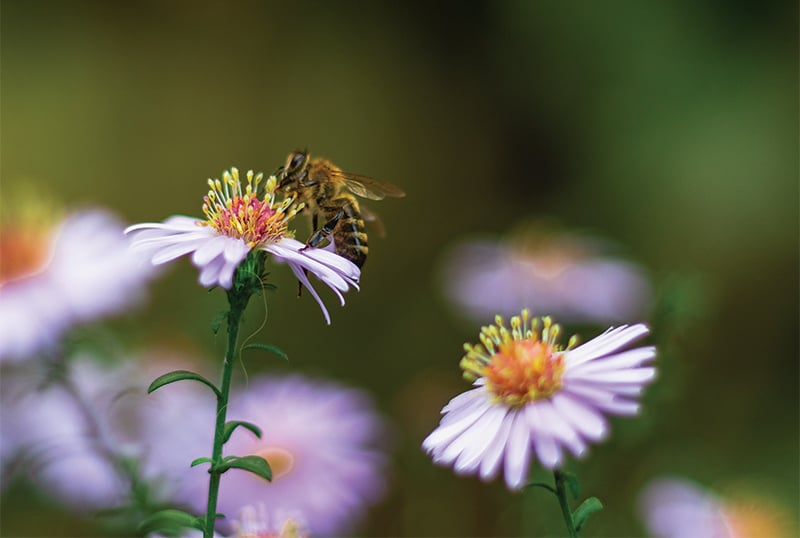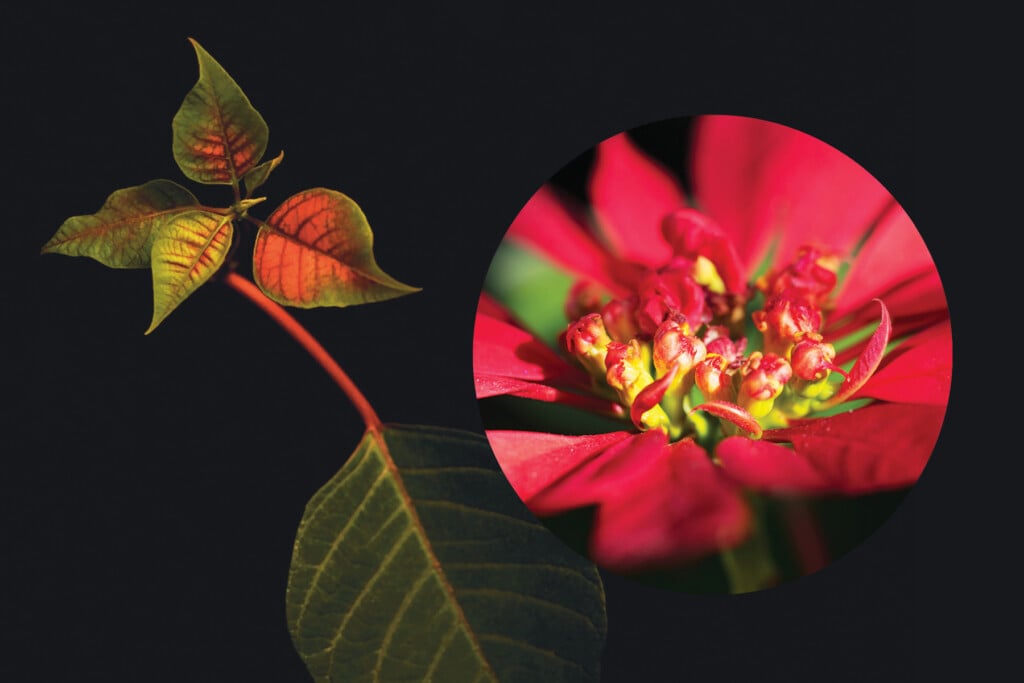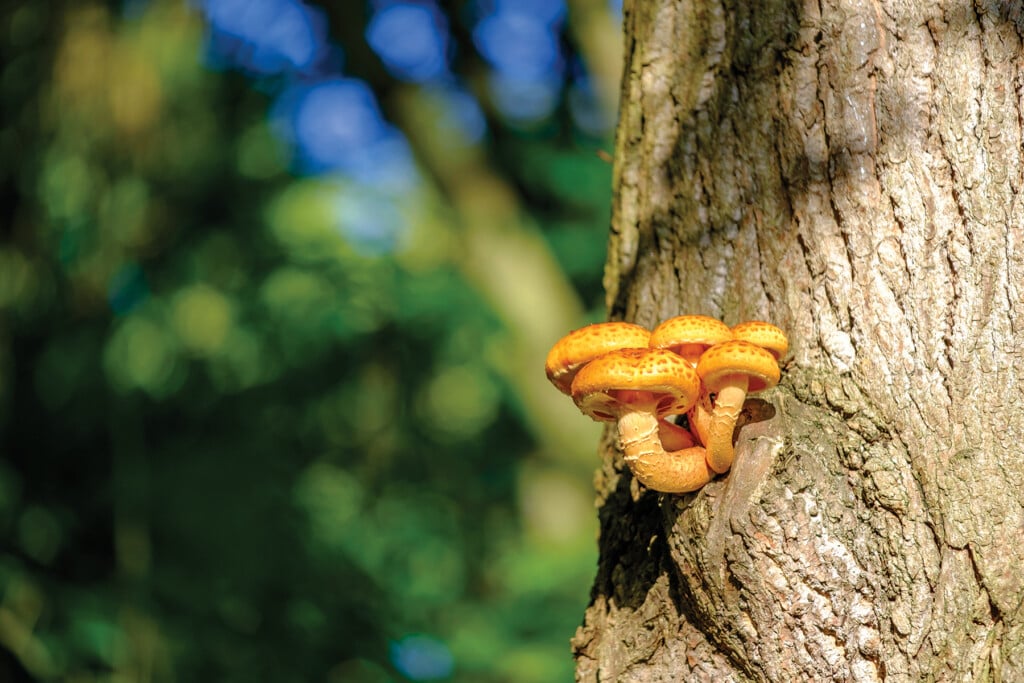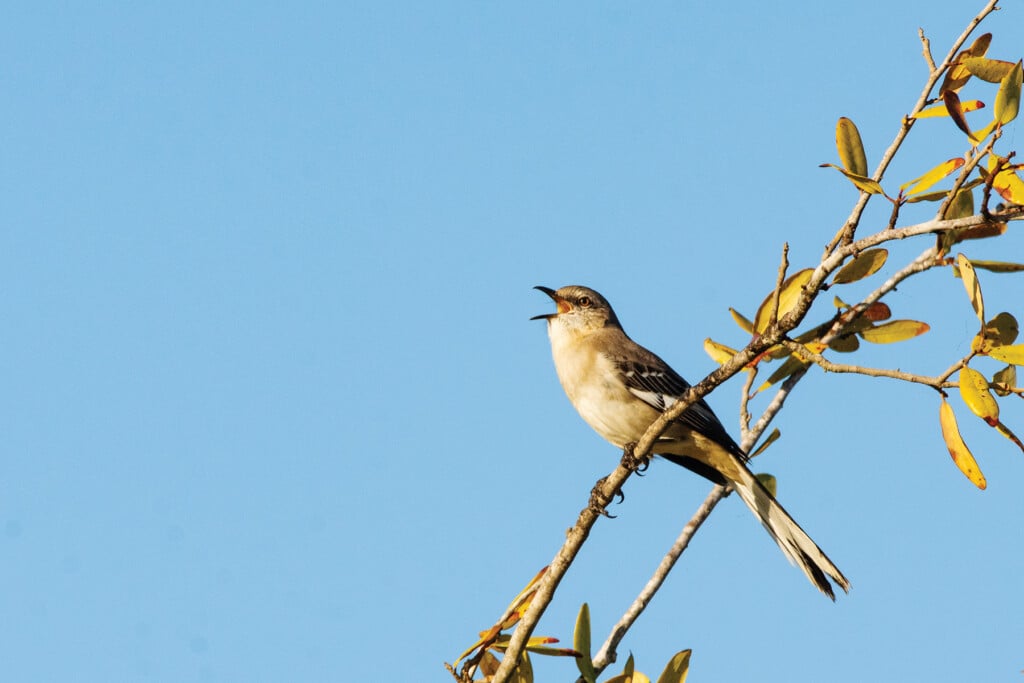The Birds and the Bees
Flora for local fauna

Did you enjoy a bracing cup of coffee this morning? And perhaps a glass of orange juice? If so, you should send kind thoughts to the bees, butterflies, hummingbirds and the pollinators that keep the food chain going.
Better still, start catering to them with your garden.
It isn’t difficult, and you’ll be rewarded with lovely blooms, less maintenance, fascinating wildlife and the knowledge that you’re helping preserve the natural world.
One of the easiest ways to grow an eco-friendly garden is by favoring native plants as opposed to what horticulturists call “exotics” — imported plants that are harmful to local ecosystems.
“I like to think of native flowering plants as gas stations for bees,” said Elizabeth Georges, one of the passionate eco-warriors at Native Nurseries, Tallahassee. “And I think of native trees as bird feeders. We need homeowners to understand and accept that the choices we make as gardeners can profoundly impact the diversity of life in our yards and communities. Homeowners everywhere can actually turn their yards into conservation corridors that provide wildlife habitats.”
The Best Natives

Flowering shrubs like this viburnum attract pollinators such as butterflies, bees and hummingbirds that keep the food chain going. An easy way to grow an eco-friendly garden is by favoring native plants versus what horticulturists call “exotics” — imported plants that may harm local ecosystems. Photo by iStock / Getty Images Plus: butterandnoodles
Georges recommends homeowners start their earth-conscious garden with plants from the keystone species.
“Without Keystone plants,” said Georges, “the local food web may fall apart.”
Keystone species are a category of native plants with a disproportionately large effect on the abundance and diversity of other species — including insects — in the ecosystem.
Native perennial sunflowers, goldenrods and asters are all keystone wildflowers. Keystone shrubbery includes native viburnum, elderberry, holly, Virginia sweetspire and blueberry.
Oaks are the No. 1 tree species in terms of biodiversity, supporting up to 557 butterfly and moth types. According to Georges, there are a variety of oaks native to Tallahassee, and their acorns and nuts provide essential food for wildlife.
In addition to keystone species, some excellent natives to plant are Indian Pink and ox-eye sunflowers; butterflies and bees love those.
Native plants don’t just provide food for insects, they also adapt well to the weather extremes typical of Northern Florida. It’s sensible to grow native plants instead of exotic plants that originate from foreign soils and climates.
“It’s much easier to grow plants that naturally prefer your site conditions instead of trying to change the soil structure or keep an unhappy plant alive,” explained Georges.
How to Get Started

Photo by iStock / Getty Images Plus: Julia Klueva
An eco-friendly garden starts with a plan and small steps toward your goal; don’t feel like you have to do it all at once. Georges suggests simply putting trees in your yard and then building beds of native wildflowers around them.
Her garden checklist is simple.
» Determine if the garden is in sun or shade.
» Check whether the soil is dry, average, moist, sandy, clay or loam.
» Include native host plants for local butterflies and moths, selecting a few for each bloom period.
» Include native grasses to increase biodiversity, habitats for bees and winter interest.
» Provide water every day for the first few weeks after planting.
» Avoid fertilizers and pesticides.
If in doubt about anything, you’ll find help at Native Nurseries or the extension offices of Florida State University. Native Nurseries advises customers six days a week and also teaches classes throughout the year.
Evan H. Anderson of Florida State University recommends checking in with the extension services in Leon or Walton counties, which offer classes, newsletters and online guides for creating indigenous gardens. He also recommends checking out fnps.org/plants for Florida Native Plant Society’s plant finder.
“The website lets you put in your location and plant requirements, such as sunlight, water or soil types,” he explains. “Then it will list native plants that do well in those conditions.”


